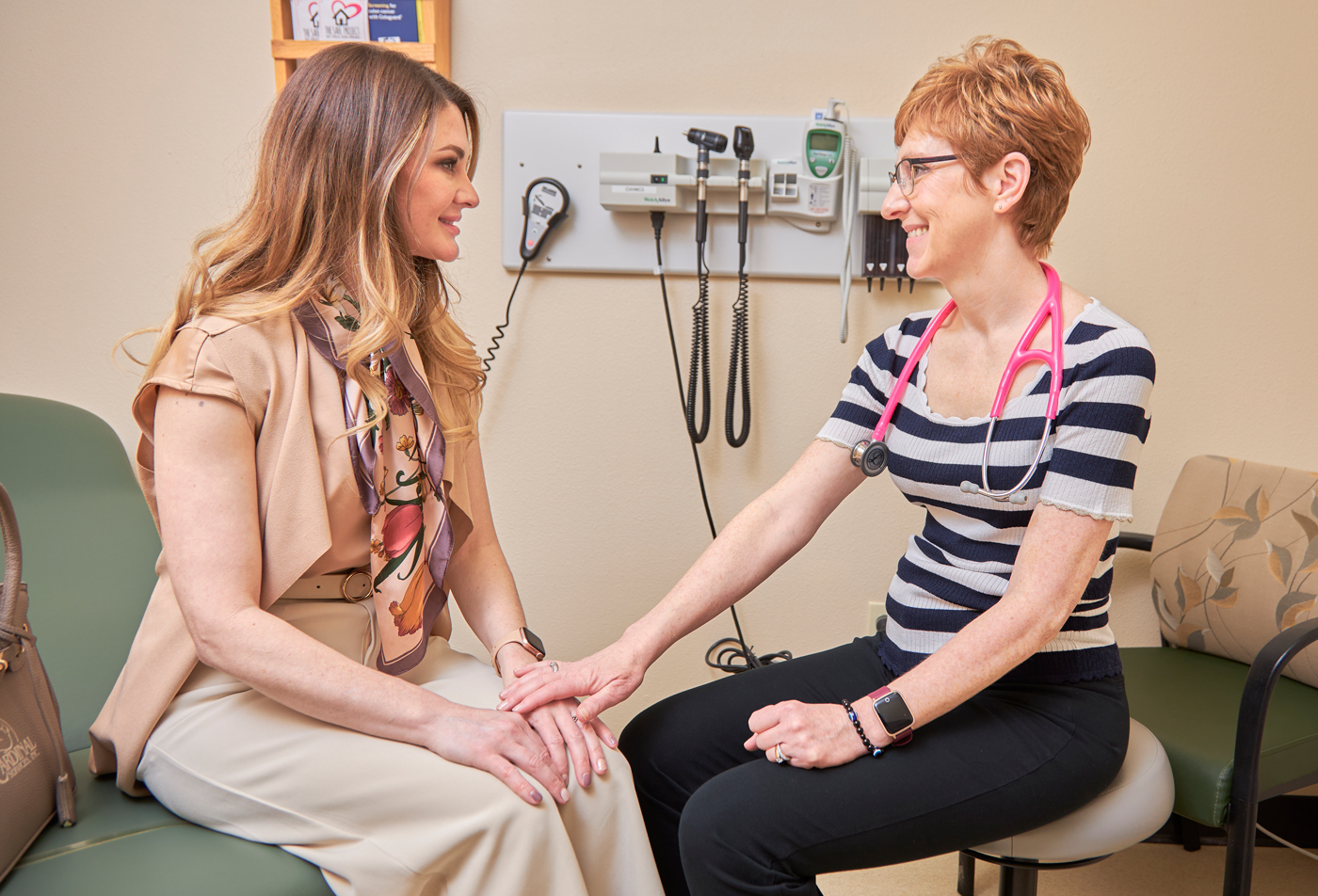Cervical Cancer: Know Your Risks And Prevention Options
Published January 24, 2023

Thanks to expanded screening tests and the approval of a vaccine to prevent viruses that can cause cervical cancer, the United States continues to see a decline in the number of women diagnosed with cervical cancer. To prevent cervical cancer, it’s important that children, both boys and girls, get vaccinated against HPV at age 11 or 12. And, if you’re a woman who is 21 to 65 years old, it’s important to get screened for cervical cancer as recommended.
A health risk for women, cervical cancer appears in the lower uterus where it connects to the vagina. Strains of the human papillomavirus (HPV) are the main cause of cervical cancer. A sexually transmitted infection, present in both men and women, HPV is usually harmless because the body’s immune system can often eliminate it. However, in a small percentage of people, the virus does survive and cause cells in the cervix to change into cancerous cells over time.
The HPV vaccine
The good news is that the rates of cervical cancer have decreased in the United States, according to the Centers for Disease Control and Prevention. This decline is attributed to the distribution of the HPV vaccine, first released in 2006.
The current vaccine, which now prevents nine different types of HPV, is given to preteens in two doses starting at age 11. The vaccine is effective for women up to 26 years old. It’s less effective in older adults because of more likely exposure to HPV, but it has been approved for women and men aged 27 through 45 years.
Your primary care provider or pediatrician can administer the HPV vaccine. Deemed safe and effective by the CDC, the vaccine can have side effects, such as swelling, redness, or pain in the shot arm, a fever, dizziness, headache or tiredness. These side effects are usually mild and disappear within a day or so.
The HPV vaccine may prevent more than 90% of cancers caused by HPV from ever developing, preventing an estimated 33,700 cases in the United States every year.
Cervical cancer screening tests
Another reason cervical cancer rates are down in the U.S. is because cervical cancer screening tests – the HPV test and the Pap test – are both widely available and can be done by your primary care provider.
The HPV test simply detects the presence of HPV virus in the cervix. The Pap test detects abnormal or precancerous cells in the cervix and uterus. In some cases, the tests can be combined, the HPV/Pap co-test, so ask your primary care provider what is best for you.
Generally, the HPV test is recommended every five years in women ranging in age 25-65, and same for the combined test. The Pap test should be administered every three years in women ranging in ages 25-65. Women older than 65, with normal screening results prior, no longer need to be screened, according to the National Cancer Institute’s screening recommendations.
Since HPV is a sexually transmitted infection, there are some lifestyle choices you can make to help reduce your risk of cervical cancer, including using condoms during sex and limiting your number of sexual partners. Not smoking can also reduce your risk of cancer, including cervical cancer.
Make an appointment today with your primary care provider for an HPV or Pap screening test, especially if you can’t remember when you had your last screening. Early detection of cancer can save lives.
Subscribe to our monthly emails for Your Well-Being! Get health and wellness tips, hospital news, staff spotlights, career opportunities, our cafe menu and more, sent right to your inbox!
DISCLAIMER: No content on this website, regardless of date, should be used as a substitute for direct medical advice from your primary care provider.




